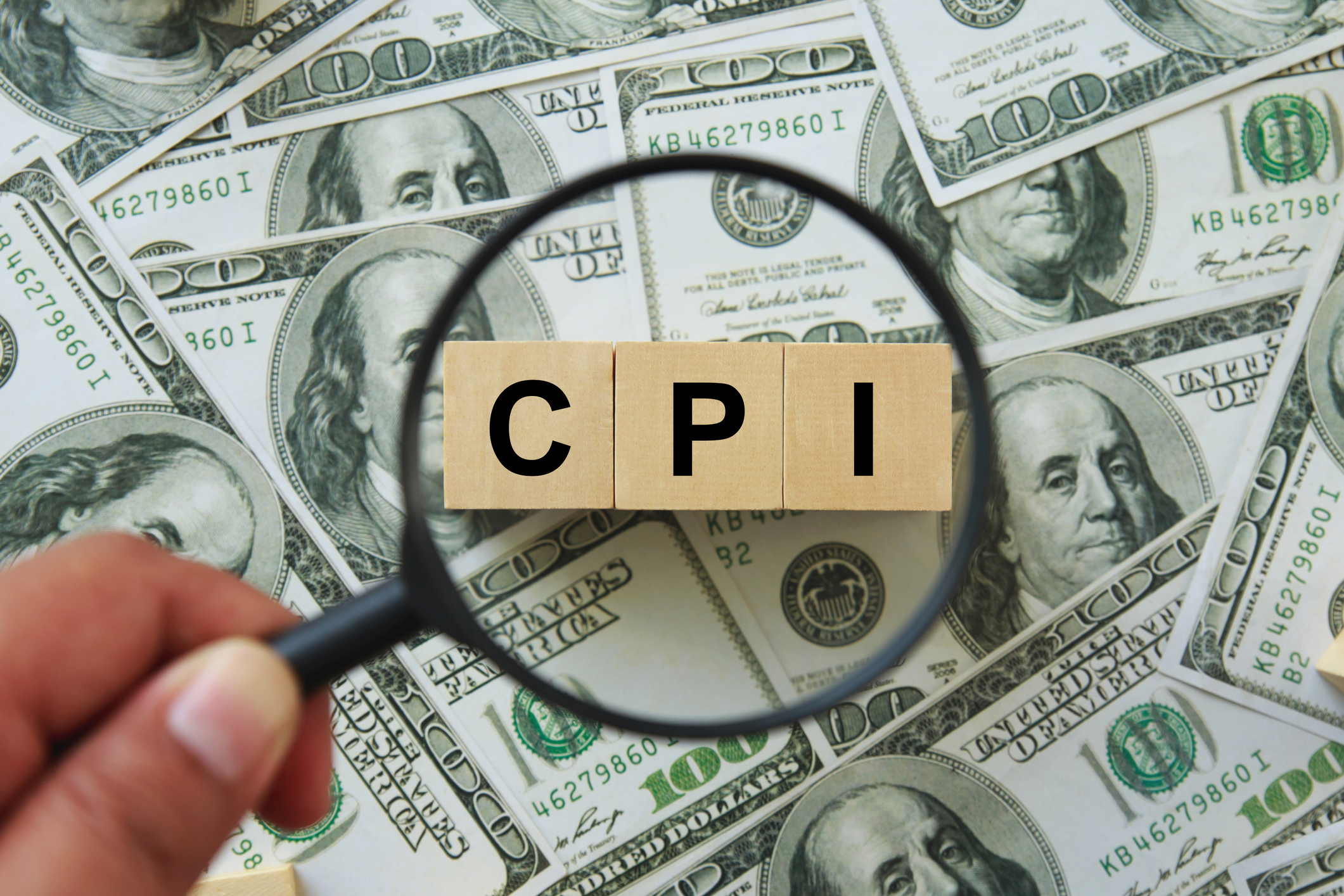Mixed August CPI Report Seals September Rate Cut: What the Experts Are Saying
A good-but-not great reading on consumer inflation sets up the Fed to reduce rates by a quarter-point at its next meeting.


A mixed August CPI report keeps the Federal Reserve on track to cut interest rates at the next Fed meeting, with a quarter-point cut looking much more likely than a half-point reduction in borrowing costs.
August CPI increased 0.2% on a monthly basis, according to the Bureau of Labor Statistics, which matched economists' estimates. However, core CPI, which excludes volatile food and energy costs and is considered to be a better indicator of future prices, rose 0.3%. That topped expectations for a 0.2% increase and made markets somewhat uneasy.
Market participants expect the Federal Open Market Committee (FOMC) to bring interest rates down from a 23-year high at the next Fed meeting. The question is whether the central bank will reduce the short-term federal funds rate by 25 basis points (a quarter of a percentage point) or 50 basis points (0.50%).

Sign up for Kiplinger’s Free E-Newsletters
Profit and prosper with the best of expert advice on investing, taxes, retirement, personal finance and more - straight to your e-mail.
Profit and prosper with the best of expert advice - straight to your e-mail.
"The Fed will most likely cut by 0.25% at its meeting next week," writes David Royal, chief financial and investment officer at Thrivent. "A 0.50% cut, in my view, would've required inflation data today that were much softer than expected. The slightly hotter month-over-month core inflation probably takes a 0.50% cut off the table."
As of September 11, futures traders assigned an 87% probability to the Fed cutting by 25 basis points at the next Fed meeting, up from 66% a day ago. Odds of a 50 basis point cut dropped to 13% from 34% the previous day, according to CME Group's FedWatch Tool.
With the August CPI report now a matter of record, we turned to economists, strategists and other experts for their thoughts on what the data means for markets, macroeconomics and monetary policy going forward. Please see a selection of their commentary, sometimes edited for brevity or clarity, below.
Expert takes on the CPI report

"The CPI inflation report was good, but not great. Consumer inflation remains a bit of a mixed bag with relatively firm services and housing inflation, but continued signs of weakness and price declines in consumer goods and energy prices. Overall, this report shows continued progress toward the Fed's inflation goals with encouraging hints that inflation could moderate further on energy price declines and with services and housing inflation having room to ease. Nothing in this report would keep the Fed from cutting in September, but market hopes for a bigger half-point cut seem to be fading away." – Scott Anderson, chief U.S. economist at BMO Capital Markets
"The economy is in the driver's seat, not the Fed. That is a good thing. Stabilizing prices, solid market, and strong corporate performance set the stage for a further market advance as the Fed moves to lower rates. A 25 basis point cut in September is the most likely outcome." – Scott Helfstein, head of investment strategy at Global X
"Headline CPI was up just 2.5% year-on-year, which is the slowest in almost three-and-a-half years, and welcome news in the fight against inflation, especially for households. Core inflation was on the hotter side, but it was mostly because of the well-known lagging effects of official shelter inflation. This does set up the Federal Reserve (Fed) to start shifting policy and lower rates at their meeting next week. The big question will be whether the Fed cuts by 25 bps or 50 bps, and it'll likely come down to Chair Powell as to whether they go big to get ahead of clearly slowing labor market trends." – Sonu Varghese, global macro strategist at Carson Group
"CPI coming in below expectation this morning reiterated the Fed's stance that the economy is due for rate cuts. The Fed's focus turning toward employment rather than inflation at this point seems warranted, as recent labor reports have come in weaker than anticipated and have been coupled with downward revisions to prior reports. We are still fully anticipating a 25 basis point cut a week from now, and markets will have to grapple with the benefits of lower rates versus the signaling that the economy is weakening." – Ben Vaske, senior investment strategist at Orion Portfolio Solutions
"Today's CPI report is good enough for now. Inflation is moving in the right direction for the Fed to cut 25 basis points this month, but shelter costs remain a concern. On the other hand, we'll probably get some relief next month from the recent decline in energy prices. The numbers aren't runaway dovish, but they confirm the cooling process remains in effect. Attention could now shift from the Fed as a catalyst toward earnings and the election cycle." – David Russell, global head of market strategy at TradeStation
"The fundamental story of sustained disinflation remains unaltered by this CPI report. The August pick up in the core index was driven by components that have a much smaller weight in the core PCE deflator – the Fed's preferred inflation gauge – or which are sourced from the PPI." – Ian Shepherdson, chairman and chief economist at Pantheon Macroeconomics
"The celebrated June dip in shelter inflation looks to be challenged where the continued move lower that many (including the Fed) had called for could be in question. We all know shelter inflation needs to drop to bring inflation back to target so this is big. This is a frustrating report for the FOMC, as hopeful components that have shown a disinflationary impulse are slowing. The risk now is that inflation overshoots to the downside as the Fed is forced to delay cuts until the data (which is lagging) rolls over and it's likely too late. In our opinion, this report pretty much guarantees only a 25 basis point cut next week." – John Luke Tyner, portfolio manager and head of fixed income at Aptus Capital Advisors
"The general consensus on the street is that the Fed is behind in beginning its easing cycle. The Fed has been looking for more consistent economic numbers to justify a cut, and since its last meeting ending on July 31, the economic data and jobs data, including manufacturing, has indicated consistent weakness. However today's data release of August consumer prices indicated 0.2% increase (higher than expected) indicating inflation is still a tough beast to tame. Every day that we have rates at these levels, increases the odds of recession. Further what many have glossed over is the actual time it takes for a rate cut to have an impact on the overall economy – economists say 8-10 months. Is the Fed behind? Markets do not like this uncertainty, especially in an election year." – Kathleen Grace, CEO of Fiduciary Family Office
"While recent economic data may indicate a larger cut is already warranted, the Federal Reserve is likely to make only one 0.25% rate cut next week. The Fed likely has concerns, and rightly so, that a larger cut would be seen as an admission that the Fed is playing from behind and that the economy is slowing faster than it expected. Although hiring trends are likely to continue to slow, recent weekly employment data show a jobs market holding up and supportive of a soft-landing scenario. The Fed wants to get a couple more data points before it makes a more drastic move." – Ross Bramwell, principal at Homrich Berg
"Powell made it clear that the progress made on inflation up to this point is sufficient to justify the start of rate cuts – this report doesn't change that. Last week's labor market data might have left the odds of a 25 basis point cut vs. a 50 basis point cut as a toss-up, but today's inflation data tips the scales in favor of 25 basis points." – Elyse Ausenbaugh, head of investment strategy at J.P. Morgan Wealth Management
Related Content
Get Kiplinger Today newsletter — free
Profit and prosper with the best of Kiplinger's advice on investing, taxes, retirement, personal finance and much more. Delivered daily. Enter your email in the box and click Sign Me Up.

Dan Burrows is Kiplinger's senior investing writer, having joined the publication full time in 2016.
A long-time financial journalist, Dan is a veteran of MarketWatch, CBS MoneyWatch, SmartMoney, InvestorPlace, DailyFinance and other tier 1 national publications. He has written for The Wall Street Journal, Bloomberg and Consumer Reports and his stories have appeared in the New York Daily News, the San Jose Mercury News and Investor's Business Daily, among many other outlets. As a senior writer at AOL's DailyFinance, Dan reported market news from the floor of the New York Stock Exchange.
Once upon a time – before his days as a financial reporter and assistant financial editor at legendary fashion trade paper Women's Wear Daily – Dan worked for Spy magazine, scribbled away at Time Inc. and contributed to Maxim magazine back when lad mags were a thing. He's also written for Esquire magazine's Dubious Achievements Awards.
In his current role at Kiplinger, Dan writes about markets and macroeconomics.
Dan holds a bachelor's degree from Oberlin College and a master's degree from Columbia University.
Disclosure: Dan does not trade individual stocks or securities. He is eternally long the U.S equity market, primarily through tax-advantaged accounts.
-
 Stock Market Today: Trump Retreats, Markets Rejoice
Stock Market Today: Trump Retreats, Markets RejoiceStocks rally, yields soften, the dollar rises, and even beaten-down names enjoy the wages of potential trade peace.
By David Dittman
-
 In Trump’s Economy Should 401(k) Savers 'Set It and Forget It?'
In Trump’s Economy Should 401(k) Savers 'Set It and Forget It?'It’s hard to bury your head in the sand when the markets are volatile. Here’s when it makes sense and when it doesn’t.
By Donna Fuscaldo
-
 Stock Market Today: Trump Retreats, Markets Rejoice
Stock Market Today: Trump Retreats, Markets RejoiceStocks rally, yields soften, the dollar rises, and even beaten-down names enjoy the wages of potential trade peace.
By David Dittman
-
 Tesla Stock Pops as Elon Musk Promises DOGE Draw Back
Tesla Stock Pops as Elon Musk Promises DOGE Draw BackTesla reported a sharp drop in first-quarter earnings and sales, as the EV maker suffered a backlash to its CEO's political ambitions.
By Karee Venema
-
 Bouncing Back: New Tunes for Millennials Trying to Make It
Bouncing Back: New Tunes for Millennials Trying to Make ItAdele's mournful melodies kick off this generation's financial playlist, but with the right plan, Millennials can finish strong.
By Alvina Lo
-
 Early-Stage Startup Deals: How Do Convertible Notes Work?
Early-Stage Startup Deals: How Do Convertible Notes Work?Some angel investors support early startups by providing a loan in exchange for a convertible note, which includes annual interest and a maturity date.
By Murat Abdrakhmanov
-
 Stock Market Today: Stocks Soar on China Trade Talk Hopes
Stock Market Today: Stocks Soar on China Trade Talk HopesTreasury Secretary Bessent said current U.S.-China trade relations are unsustainable and signaled hopes for negotiations.
By Karee Venema
-
 How Can Investors Profit From AI's Energy Use?
How Can Investors Profit From AI's Energy Use?Global energy demand is expected to grow by leaps and bounds over the next several years as AI usage accelerates. Here's how to get a piece of the pie.
By Jacob Schroeder
-
 Can Trump Fire Powell? A Supreme Court Case Could Decide
Can Trump Fire Powell? A Supreme Court Case Could DecidePresidential posts threaten to overwhelm decades of precedent and tradition, whatever the nine justices decide.
By David Dittman
-
 What Are AI Agents and What Can They Do for You?
What Are AI Agents and What Can They Do for You?AI agents promise to be the next big thing in artificial intelligence, but what exactly do they do?
By Tom Taulli